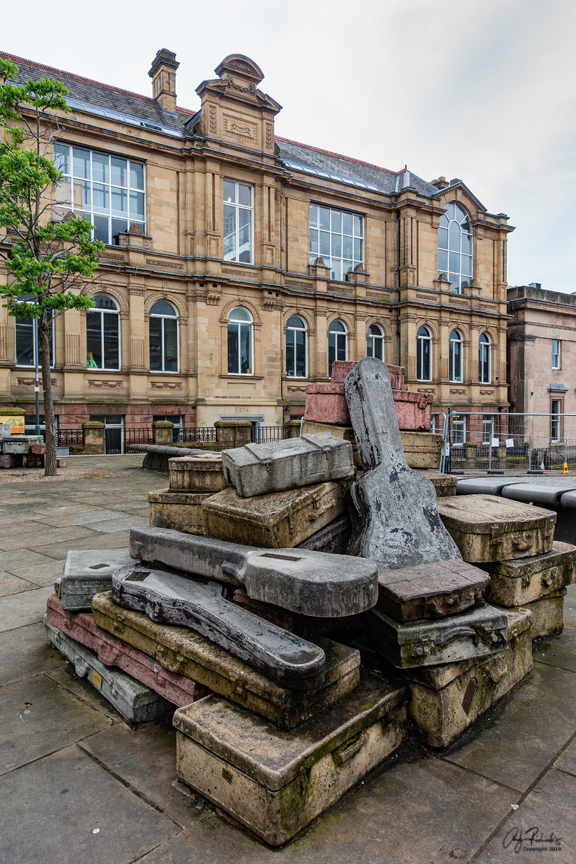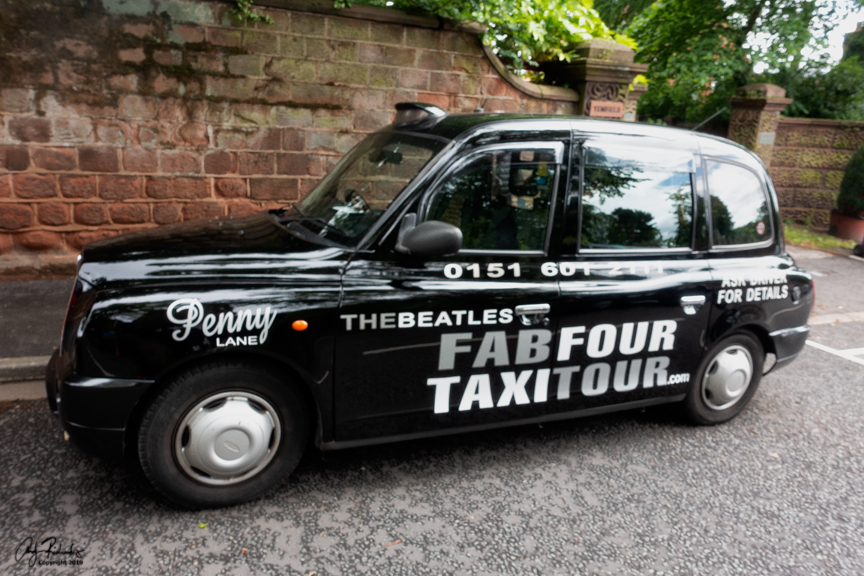The Empress at the entrance to Admiral Grove where Ringo's mother was a barmaid
- right around the corner from the "Pink" House - Liverpool, England
BY 1960, the band was trying (but struggling) to book gigs in Liverpool. By then, the band was composed of Lennon, McCartney, Harrison, another fellow student, Stuart Sutcliff, on the base guitar, and Pete Best as drummer. They had not really liked the Quarrymen name for a while and tried on a few others. Eventually, the Beatles stuck. On account has it that they were huge fans of Buddy Holly (and his band, "The Crickets"). It is also surmised that the "A" in the name comes from combining the insect with "the beat." I couldn't find much else about the why, so I'll go with that. 😑
Admiral Grove - the neighborhood where Ringo Starr grew up
IN AUGUST of 1960, the band was invited to play at one of the clubs in Hamburg, Germany. Once Germany's largest seaport, Hamburg was reduced to rubble during WWII. As it re-invented itself, it became a known as a center of vice and crime. But within that culture, a center of bars, nightclubs, dance clubs, strip clubs, and brothels grew along the Rieperbahn, the main street in the St. Pauli Quarter, Hamburg's "red light" district. Hamburg was economically rather wealthy in contrast to the rest of depressed, post-war Germany. This nightclub scene, credited for the "British Rock & Roll Revolution," was a place many British Bands went to play. But by far the most famous was the band at that time composed of the 5 musicians: Lennon, McCartney, Harrison, Sutcliff, and Best. When they first got the chance to go to Hamburg, they did not have a permanent drummer. Lennon knew Best and convinced him to join them in Hamburg. They played at a number of clubs in Hamburg over a 2 plus year stretch, (banking over 1,000 live performances before recording their first "hit" song). At some point during this period, Sutcliff decided to return to England and his educational pursuits. In 1962, he died of a brain hemorrhage.
The home where Paul McCartney grew up - now owned by The National Trust
AT THIS time, Ringo Starr was playing in another group from Liverpool in Hamburg, Rory Storm and The Hurricanes. In October, 1960, One band member of The Hurricanes did a recording session in Hamburg, and the promoter (connected to both bands, among others) asked Lennon, McCartney and Harrison to play in as studio musicians, doing backup and singing harmonies. Best was unavailable, so the Hurricanes drummer, Ringo Starr sat in. This was the first time the four had ever played together.
Ringo Starr's boyhood home at 10 Admiral Grove, Liverpool
RINGO CAME up a bit differently than John, Paul and George (all of whom knew each other as teenagers in Liverpool, when they played together as the Quarrymen). Born, Richard Starkey, he suffered from a life-threatening illness at age 6 (complications from appendicitis). He spent parts of a full year in the hospital. He fell behind in his education and that influenced his path in life. He had developed an interest in drumming by that time. In 1944, (when Ringo was 4), the family had moved to the now-famous pink Admiral Grove House. Shortly afterward, his parents divorced. 10 years later, his mother married Harry Graves, a former Londoner. Graves was an avid Big Band music fan, and encouraged Ringo in his music pursuits, buying him his first used drum set as a Christmas present in 1957. By then, Starkey had met an acquaintance through his work who had gotten him interested in Skiffle, and they had gone on to form a Skiffle Band, The Eddie Clayton Band. By 1958, however, the Rock and Roll revolution took over. In 1959, Starkey joined the band that was to become The Hurricanes. It was there that he took on the stage name, Ringo Starr.
There was some kind of event going on the day we were here, so it was difficult to get near, or to get a photograph of Lennon's boyhood home.
OUR EXCURSION took us on a tour of the early history of The Beatles in Liverpool. We saw the name-sake inspiration for several of their most famous songs (mostly penned by McCartney), including Penny Lane and Strawberry Fields, as well as a few of the places mentioned in Penny Lane, like the barbershop, the roundabout, and the fire station.
The foliage is so overgrown that it is nearly impossible to see George Harrison's boyhood home
THERE WERE some surprises. In writing these songs, McCartney often drew from his boyhood memories. But he took license. Penny Lane, for example, is not where any of the other mentions (the barbershop, roundabout, etc.) are. They are nearby, but on a completely different street. Penny Lane is a very small, quiet, residential street near where Paul grew up.
The building in the middle of "The Roundabout" is now a Bistro
SOME MAY remember the Late Show, hosted by James Corden, and his "Carpool Karaoke" segments. Some years back (before we were in Liverpool), I happened to tune in to a segment he did with Sir Paul McCartney. I have linked it here, and would highly recommend any Beatles fan (whether avid or casual) watch the YouTube coverage if you can. It was amazing to me how we followed the basically same path that Corden and McCartney did. We ended our tour in the bar which figures at the end of the video (I won't spoil it for those who havent' seen it).
Penny Lane Barber Shop is not on Penny Lane 😔
ANOTHER SCENE in the Corden piece was when they stopped at the sign at the beginning of Penny Lane. Of course, we stopped there too. But when McCartney and Corden stopped, McCartney stepped out of the vehicle and autographed the sign. It isn't real legible, but if you look closely (or if I cheat and circle it 😀) you can clearly see it. I went back and watched the YouTube where I saw him do it. You also see the front room with the upright piano in McCartney's home, where much of the writing, and even some of the Quarrymen rehearsals happen. The only way you can see that room today is by appointment through the National Trust - not an easy thing to do.
Penny Lane Sign
OUR BEATLES tour was a very fun day. Maybe one of the most fun excursions we have taken in all of our cruising. I am really looking forward to the repeat this June - with some additional photo-ops, and maybe to learn more about this seminal music group. The various Beatles Tours are pretty obvious to Liverpool visitors, as one of the most popular attractions of the city. We did, however, have an opportunity to enjoy other parts of the city, including its active downtown where we visited the Liverpool Gin Distillery and The Alchemist. But the Beatles will always fill my memories of Liverpool.
One of the numerous Beatles Tour options in Liverpool
























No comments:
Post a Comment
I WOULD LOVE TO READ YOUR COMMENTS: